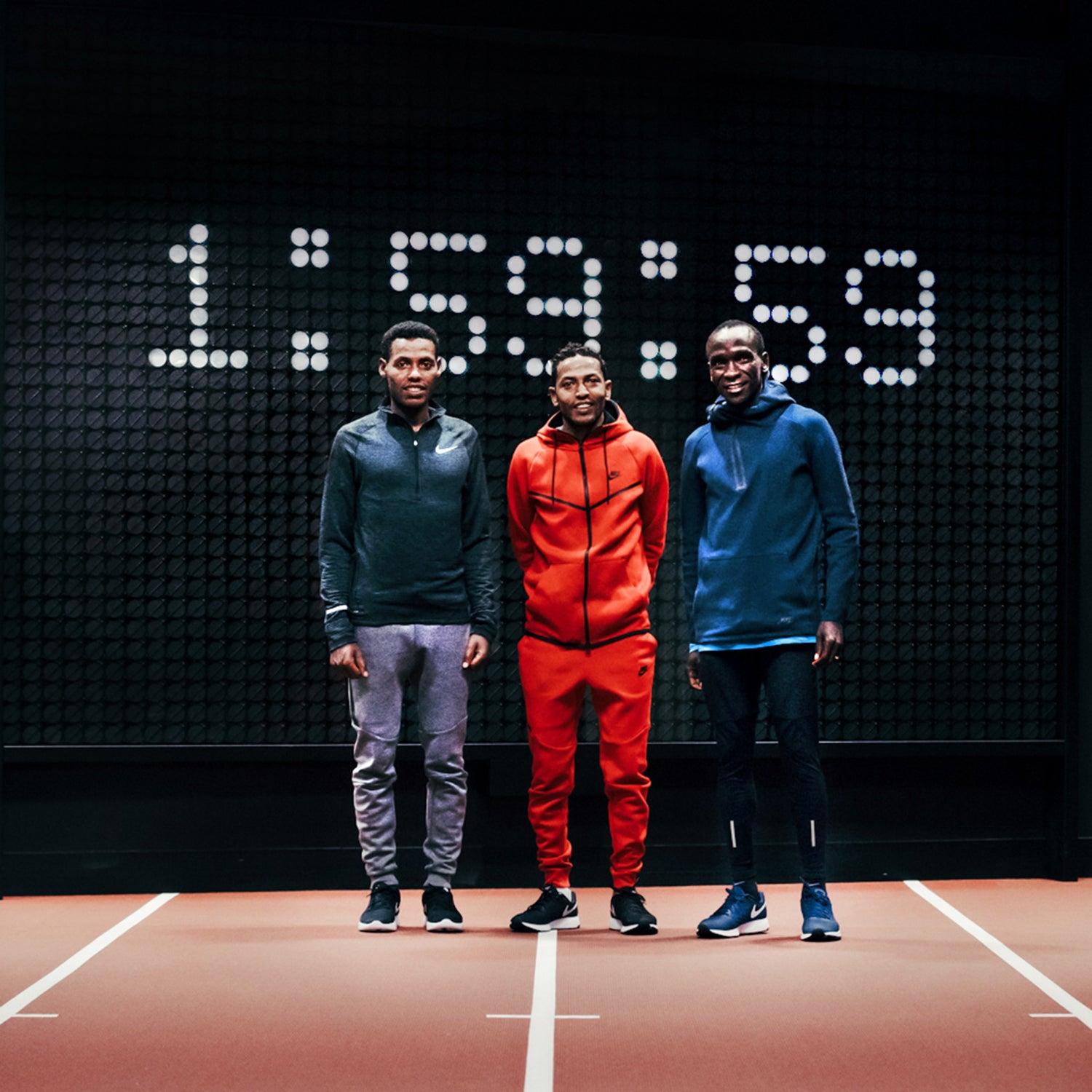Earlier this month, Nike unveiled its Breaking2 project, a moonshot-style collaboration of athletes, scientists, and designers with the goal of trying to break the two-hour marathon barrier next year. In their announcement, the company was light on details in terms of how they planned to pull this history-making run off, but claimed that they will “debut a system of groundbreaking innovation that has the potential to elevate every runner.”
Last month, however, the Oregon-based company filed a for a running shoe that features a in the sole. Theoretically, it would improve a runner's energy return. Though Nike could not be reached for comment, that this is partly how they plan to break the two-hour barrier.
Though significant running records like the four-minute mile or the ten-second 100m make history, the process of actually breaking them is largely mundane. Subtle variations in course profiles, weather, the specific athletes, and the shoes they’re wearing all play a crucial if fractional role in the story that ends up making headlines. It’s for this reason that many shoe manufacturers are working so diligently to produce the world’s fastest shoe.
Should Nike’s runners break the two-hour marathon record sporting the company's new spring plate-loaded shoe, there will be no authority to step in and deem the run illegal.
But of course any new racing shoe technology—and particularly one with such an ambitious end goal—will face heavy scrutiny, no matter how small a benefit it ends up giving runners. “Up to now, any shoe technology that made a potentially large impact on running performance has been banned,” says Steve Magness, who writes about the sport on his website . “Even the highly touted Adidas Boost technology only gives about a one percent improvement in running economy, which translates to only fractions of a percentage improvement in actual performance. If Nike or any company develops technology that has a drastic impact on performance, it’s likely to be illegal or at the very least, skirting the bounds of the rules.”
According to Rule 143 of the IAAF Competition Rules, shoes “must not be constructed so as to give an athlete any unfair additional assistance, including by the incorporation of any technology which will give the wearer any unfair advantage.” The IAAF approves all shoes used for competition.
Puma’s Sacramento brush spike is a good example of a shoe which gave its runner an unfair advantage. In the early '60s, after the proliferation of soft tartan tracks, runners began using spiked shoes, and in 1968 Puma built a spike with 68 needles on the sole based on the idea that it would grip better than the traditional six-nail version. Runners sporting the new brush spike immediately started breaking records. The shoe was subsequently banned by the IAAF prior to the 1968 Olympics in Mexico City, the records were negated, and a rule was created that banned running shoes with more than six spikes.
Athletic Propulsion Labs (APL)—a specialty shoe company founded by Ryan and Adam Goldston—tried something similar in 2015 with the release of a spring loaded running shoe, the Windchill, which reportedly rebounded more quickly than traditional shoes and shaved seconds off the wearer’s times. The Windchill was never banned, likely because it was never used to win a major competition, but APL’s spring-loaded basketball shoe, dubbed the Concept, was banned by the NBA for providing “undue competitive advantage.”
Michael Joyner, a physician, researcher, and one of the world’s leading experts on human performance and exercise physiology, also speculates that a spring-loaded shoe would probably be banned in competition. But the tricky thing in Nike’s case is that their Breaking2 project is not a formal competition—it is not under the purview of a governing body. Should Nike’s runners break the two-hour marathon record sporting the company's new spring plate-loaded shoe, there will be controversy, but there will be no authority to step in and deem the run illegal.
However, Magnuss, for his part, is doubtful that any shoe technology will actually make that big of a difference when it comes to breaking two hours in the marathon. “It will be a small contributing factor,” he says. “Three minutes in a marathon at that level will take much more than shoes. At this point in time, it will take a downhill course, lots of pacers, and an inhuman performance. In other words, a lot of artificial advantages that circumvent the rules of the sport.”


